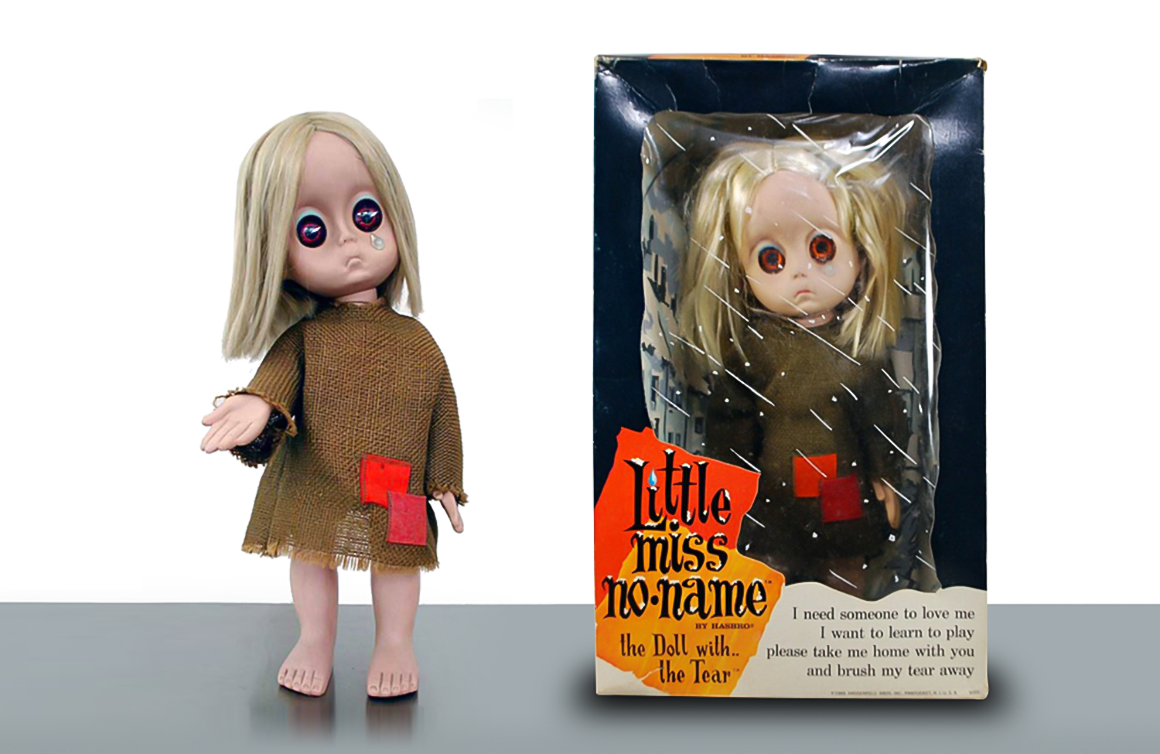Hasbro’s Little Miss No-Name is a study in misguided product marketing. Designed as the antithesis of the impossibly glamorous Barbie, Little Miss No-Name failed on many levels. Hasbro’s main misstep with this doll was inadvertently oppugning the harmless escapism that Barbie lovers everywhere enjoyed.
Designed by Deet D’Andrade, Little Miss No-Name is said to have drawn inspiration from the paintings of American artist Margaret Keane, whose work featured large-eyed children. The impoverished doll came without shoes and dressed in a burlap sack with patches and a safety pin holding the outfit together.
With large sad brown eyes, a drooping mouth, and mop of unkempt blond hair, Little Miss No-Name’s piteous state was accented by a large plastic teardrop that could be inserted into a hole under her one of her eyes. Adding to her plight, the doll’s hand was molded such that, when her arm was extended, she appeared to be begging.
Hasbro emphasized Little Miss No-Name’s plight in its advertising. Print ads often played up what “the Doll with the Tear” lacked:
She doesn’t have a pretty dress.
She doesn’t have any shoes.
She doesn’t even have a home.
All she has is love.
The doll’s packaging presented Little Miss No-Name standing outside in a cold, slushy snowstorm. Hasbro doubled-down on the Little Miss No-Name’s backstory with this personal plea on the box:
I need someone to love me
I want to learn to play
please take me home with you
and brush my tear away
The doll’s shelf life lasted just a few years. But while she was on the market, Hasbro pulled out all the stops, including a cross-promotion with Borden’s Dutch Instant Chocolate Flavored Mix in 1968.
Little Miss No-Name remains popular with vintage toy collectors. Rare mint-condition, in-box versions sell for triple digits at auction.
Note: If you buy something using the eBay link in this story, we may earn a small commission. Thank you for supporting independent toy journalism!


